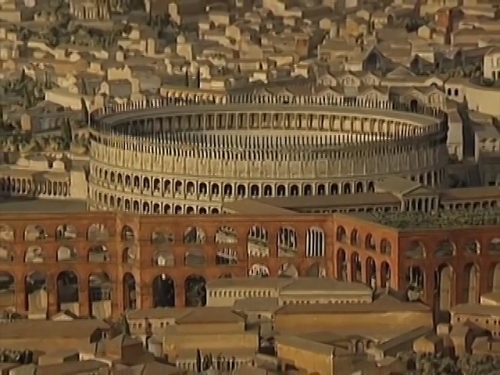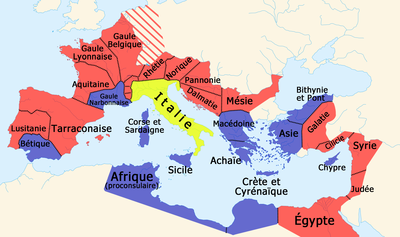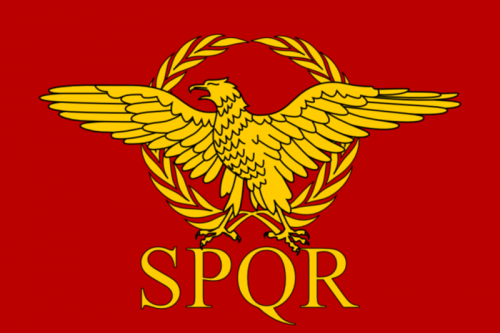mercredi, 05 février 2020
The concept of Empire: Pagan Rome

The concept of Empire: Pagan Rome
In our common understanding the term empire usually denotes a powerful country, in which one ethnicity oppressively rules others. Examples of these can include colonial empires of Spain, France, or Great Britain. Another way the term empire gets used is to describe the most powerful countries in their region that have gained control of that region militarily: examples of such naming conventions include all Chinese ‘empires’ from Qin to Qing, or Mughals in India, or the Mongols. Both these definitions however are later and erroneous ways of using the term empire that came into existence since the European Age of Modernity. However, the primordial definition and traits of an empire go way beyond these simplistic definitions that have stuck to our shared imagination. However, by exploring and un-covering the deep-lying etymological and historical roots of the term Empire it will be possible to transcend the flawed conception imposed on us since the times of Modernity.
There are three main stages through which the term empire has evolved. First stage is the Pagan Roman one – ‘imperium’ – that has its origins during the Roman Kingdom and ends with Constantine the Great. The second is the Christian Roman definition of ‘imperium’ and ‘basilea’ that runs from Constantine the Great all the way to Constantine XI. Finally, the last stage is the Orthodox Russian ‘tsardom’ that runs from Ivan IV up until Nicholas II.
In this first instance I invite you to consider the inception of the term Empire in Ancient Rome, covering the periods from Rome’s foundation in 753 BC to 312 AD, which is the date of Constantine the Great’s victory at the Milvian Bridge.
The term Empire or ‘imperium’ comes from the Latin verb ‘imperō’ – to command or to rule, which itself derives from the Proto-Indo-European root of ‘per’ – to bring forward or to produce.
Given such origin, ‘imperium’ was a political power that enabled a person to command other people, to be the first to propose new legislation or give military commands. In addition, the root ‘per’ suggests primacy and a vertical social relationship between the imperator – the one holding the ‘imperium’ – and those to whom his commands are directed.
The main application of the word ‘imperium’ in Roman Kingdom (753-509 BC) and Roman Republic (509-27 BC) was as a military position of an army general that granted a magistrate legal power to command. Importantly, ‘imperium’ was a social concept that conferred the commanding powers to a person by a group of subordinates. As such, Roman kings had to be elected by a group of patricians who also bestowed them with the power of ‘imperium’. Thus, an ‘imperator’ or emperor was the first man in society, but his powers were hinged upon that very society’s favour, creating a sort of a social contract. An excellent visualisation of imperium being a social contract is seen by another institutional rule of Ancient Rome – the Pomerium. The Pomerium was a legal border of the city of Rome proper which in Roman Republic was prohibited from entry by anyone in possession of army command – generals, imperatores. Any imperator who entered the gates of Pomerium automatically forfeited his social contract, lost the Imperium, and stopped being an army general. As such, it is crucial to understand that throughout the Roman Kingdom and Republic imperium was a commanding power that was bestowed upon a person by the society, and nothing but that.

Fast forward to Augustus, we come to the period of Roman history generally called the ‘Principate’ in which all emperors from Augustus to Carinus maintained the importance of social contract as their source of power. In truth, Roman Empire should really denote the Roman state ruled by a commander, whose legitimacy derives from the public approval. Indeed, even though the role of the senate and the consuls was greatly diminished, the inner working of the Roman society remained the same as it was during the Republic. This was exemplified by the growing importance of the military class to ensure and dictate the office of Emperor. In particular, the Praetorian Guard, evolved into the elite bodyguard army unit to the emperor himself, by enjoying close proximity to the ruler, were able to orchestrate military coups and even sell the title of emperor on one occasion to Didius Julianus. The epitome of the importance of the army has come during the Crisis of the Third Century, whence the Roman state had seen almost 30 emperors in 50 years. The pretender emperor was usually acclaimed by his legions in exchange for monetary gains and promotions. The choosing of ‘imperator’ as well as his social status therefore remained as they were under the Republic: the emperor was a person vested with commanding powers through a social contract by a group of inferiors. Furthermore, incompetence or unpopularity of an emperor has often led to new pretenders, coups and murders, thus further reinforcing the idea of social contract between the ‘imperator’ and his inferiors.
Crisis of the Third Century brought such a strain on the political and economic bases of Rome that a radical change was necessary. Emperor Diocletian recognised this and implemented an overhaul of the empire creating a ‘tetrarchy’ splitting the power into four, and starting the historical period known as the ‘Dominate’. This period is characterised by the distancing of the ‘imperium’ holder from his inferiors, giving himself larger autonomy to rule and boosting the prestige of the position. Diocletian further divided Roman lands into more numerous provinces under dioceses, making it harder for pretenders to rise and gain support of the military. The next reform was to share the ‘imperium’ between four titleholders: two senior emperors and two junior caesars. Even though Diocletian’s reforms worked in the short term to stabilise Rome, the long term effects were rather inadequate and only really deepened the social contract between emperor and subjects. That is, now the emperor was expected to behave even more as a benevolent master, bestowing more gifts and promoting officials; quite obviously, the failure to do so resulted in civil strife as happened during the time of Constantine the Great. Furthermore, the division of the imperial power into four under ‘tetrachy’ has led in the long-term to the permanent split of Rome into East and West in 395 AD. Given what we have described about the nature of legitimacy of power through ‘imperium’ this split presents itself as unavoidable. The power to command the ‘imperium’ makes the titleholder appear as the first amongst equals by the Roman society as a whole. As such, two men could not simultaneously hold primacy without clashing. Furthermore, with the increasing importance of the role of the emperor during Dominate, the prestige and benefits have become too great to share between two ambitious men.
At the same time, however, Diocletian has set in motion two major developments to the social contract of ‘imperium’. First is the centralisation of the governmental administration on the figure of the emperor, making the entire state dependent on having a strong and capable ruler like never before. This development will come to clear view after the battle of Adrianople later on in 378 AD, which saw the emperor Valens killed on the battlefield. The death of Valens has sent shocks across the entire Eastern Roman administration, and produced a new political system in which emperors almost never left the capital Constantinople in order to preserve the administration, the ‘imperium’, and their lives. This state of affairs continued all the way until emperor Heracleios in 610 AD, who became the first Roman emperor to personally command the army against a foreign enemy since Valens. The second major development that can be attributed to Diocletian is his formal separation of Roman state from the city of Rome. Ever since the Crisis of the Third Century started, the capital of Rome was in practice wherever the acting emperor had his legions, thus diminishing the importance of Rome as a capital. Since the city of Rome was poorly protected from attacks and sieges from pretenders, its possession stopped conferring the same legitimacy as it did under the Principate. As such, Diocletian elevated this practical state of affairs to become legislation by moving his court to Nicaea in Eastern Anatolia. The big significance of this move is the detachment of the legitimacy of ‘imperium’ from one specific place or city. There will be two more major centres of Roman state throughout the rest of Roman history, namely Constantinople and Moscow. However, neither of them will have the Pomerium mentioned earlier, thus legally depriving the capital from having juridical force to grant or take away the power or ‘imperium’.

This point seems to be a fitting end to the first part of my exploration of the concept of Empire, which concentrated specifically on Pagan Roman period and the usage of the term during this time. The main takeaways would be to underline how the Latin word for Empire – ‘imperium’ implied a social contract by which a person gained rights to command and legislate. This social contract was premised upon appeasing the lower social strata that has put the ‘imperium’ holder in charge. This fact has often led to rebellions, civil strife, and ultimately the Crisis of the Third Century. In the next article I will attempt to explicate the way ‘imperium’ changed when Rome became a Christian state, and the way Divine Favour started to replace social contract.
00:40 Publié dans Histoire, Traditions | Lien permanent | Commentaires (0) | Tags : empire romain, rome, rome antique, antiquité romaine, humanités classiques, notion d'empire, empire, imperium |  |
|  del.icio.us |
del.icio.us |  |
|  Digg |
Digg | ![]() Facebook
Facebook



Les commentaires sont fermés.